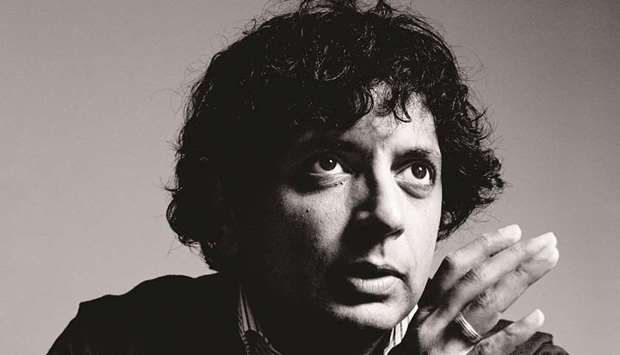When Night Shyamalan’s superhero story Glass arrives in theatres on Friday, Glenn Frischette, a co-owner of Fourth World Comics in Smithtown, NY, plans to be among the first to see it. Frischette, 70, says he’s been waiting nearly 20 years to see Glass, the final instalment in a trilogy that launched in 2000 with Unbreakable, starring Bruce Willis and Samuel L. Jackson, and continued only recently with 2016’s Split, featuring James McAvoy as a mentally ill man nicknamed The Beast.
“I always wanted to see a sequel to Unbreakable,” Frischette says. “People always ask me, ‘What’s your favourite superhero movie?’ And I always make sure to put Unbreakable in there.” Among patrons at his store, says Frischette, the advance buzz on Glass seems about as strong as it was for such major hits as Deadpool and Venom.
In an otherwise typically quiet January, Glass seems poised to make a splash. It marks the reunion of Willis and Jackson as memorable foes from an acclaimed film that still has a loyal following. It comes close on the heels of Split, an unexpected hit that earned $278 million on a reported $9 million budget. What’s more, Shyamalan, one of America’s best-known, if much-maligned, filmmakers, seems to be enjoying a comeback after a long string of such duds as The Lady in the Water and The Last Airbender.
“Superheroes are in right now and people are looking for unique takes on the genre, and this is shaping up to be one of them,” says Shawn Robbins, chief analyst at Boxoffice.com. He predicts the film could enjoy a strong $70 million opening weekend — a January rarity. “It will be the first effectively big movie of the year,” he says. “It’s almost like a mini-tentpole in January.”
Glass completes what’s being called the Eastrail 177 Trilogy, named for the train in Unbreakable that crashes and leaves survivor David Dunn (Willis) wondering how he emerged unscathed. The film ends — spoiler alert — with an ailing, fragile man named Elijah Price (Samuel L Jackson) revealing himself as Dunn’s arch-villain, Mr Glass. Unbreakable impressed critics with its unusually thoughtful treatment of a comic-book-style narrative. Roger Ebert wrote that it required “attention and patience on the part of the audience” and that the actors “give performances you would expect in serious dramas.”
“When it came out, there was that uncertainty — could they really pull off a good comic book movie?” says Joe Mulvey, a Queens-based comics writer and illustrator. At the time, the genre was defined mostly by pulpy fare such as Blade and Joel Schumacher’s widely ridiculed Batman and Robin, he says, but Unbreakable — not based on any existing property — came as a revelation. “Look! It can be done right!” Mulvey recalls thinking. “There’s a story about a person who’s a superhero, but it can be taken seriously and done well.”
Following his success with The Sixth Sense (1999), Unbreakable helped make Shyamalan a household name. In August 2002, Newsweek put him on its cover with the headline, The Next Spielberg. Instead, critics began to tire of Shyamalan’s twist endings and what seemed like an egotistical streak (the director almost always appears in his own films). The Village met with mixed reviews in 2004, Lady In the Water was near-universally panned in 2006 and The Last Airbender, an unlikely fantasy-adventure from 2010, holds a scant 5 percent rating at RottenTomatoes.
“He was in real movie jail for a while,” says Brent Lang, executive editor of Film and Media at Variety magazine. “He had a formula that he became overly reliant on, and it became kind of gimmicky.”
What helped Shyamalan bounce back, Lang says, was The Visit, his effort for Blumhouse Productions, a studio famous for low-budget, high-profit horror films (Paranormal Activity, Insidious, Get Out). A creepy-funny take on the Hansel and Gretel story, The Visit marked a back-to-basics approach for Shyamalan and earned $98 million worldwide on a reported budget of just $5 million.
While Shyamalan’s career was faltering, though, two interesting things happened. One, superhero movies became not just popular but deeply entrenched in entertainment and pop culture. And two, the horror genre slowly evolved from splattery fare like Saw to more deep-reaching, well-crafted movies like Let the Right One In and Get Out. Shyamalan met both trends head-on with Split, a kind of superhero-horror hybrid driven by McAvoy’s high-energy performance and connected to Unbreakable thanks to — another spoiler alert — a wry cameo from Willis as David Dunn.
“Shyamalan has this self-contained nature and this self-referential nature to his films — they have a timeless quality,” says Bruce Nash, publisher of the box-office tracking site The Numbers. “That turns out to be a kind of advantage, when you can come back to an idea and it still resonates with an audience all these years later.”
With Willis, Jackson and McAvoy reprising their roles, plus new addition Sarah Paulson as a psychiatrist, Glass seems likely to appeal to Shyamalan fans, comics fans and possibly moviegoers who wouldn’t otherwise see a superhero movie at all.
“I’m really excited for this movie,” says Tom Brennan, a Bronx-based former editor for Marvel who now teaches a comics course for Drexel University in Philadelphia. “People are thinking: Let’s go check this out and see if he can pull it off. There’s hope that it succeeds, because it could open the doors for more alternative forms of comic-book storytelling.” —Newsday/TNS

BUZZ: Night Shyamalan’s latest pitch has created a massive buzz and some experts are betting on a record opening.

